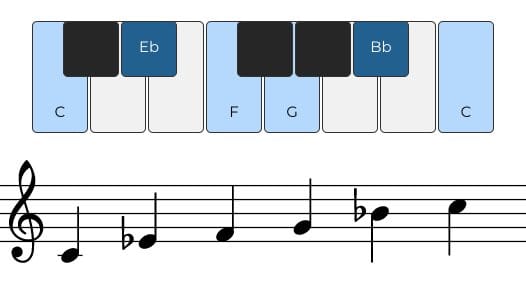What is a Minor Pentatonic Scale?
In the realm of music theory, the minor pentatonic scale occupies a revered position, renowned for its emotive depth and versatility. From the melancholic strains of blues to the fiery licks of rock guitar solos, this scale has left an indelible mark on countless compositions and performances. In this exploration, we delve into the essence of the minor pentatonic scale, unraveling its structure, characteristics, applications, and its enduring allure in the world of music.

The minor pentatonic scale is a five-note scale derived from the natural minor scale, a fundamental element of Western music theory. It consists of intervals that create a distinct pattern of whole steps and minor thirds, resulting in a sound that is both haunting and expressive. The scale is constructed by taking the root note, lowering the third and seventh degrees of the corresponding natural minor scale, and then removing the second and sixth degrees entirely.
What is a Minor Pentatonic Scale?
A minor pentatonic scale is a 5 note scale consisting of the 1, flat 3, 4, 5 and flat 7. That is do, me, fa, sol and te in solfege. In the key of C that would be C, Eb, F, G and Bb.
The notes of the minor pentatonic scale are often represented as the root (1), minor third (b3), perfect fourth (4), perfect fifth (5), and minor seventh (b7). This unique combination of intervals imbues the scale with its signature blend of tension and resolution, allowing for a wide range of emotional expression.
The minor pentatonic scale is characterized by its emotive qualities, evoking feelings of longing, introspection, and intensity. Its intervals create a sense of tension and release, drawing listeners in with each melodic phrase. The absence of certain notes found in the full minor scale lends the pentatonic version a more open and spacious sound, making it particularly well-suited for improvisation and soloing.
The minor pentatonic scale has found widespread use across various musical genres, from blues and jazz to rock, metal, and beyond. Its versatility allows it to adapt seamlessly to different styles and contexts, serving as a foundational tool for composers, improvisers, and performers alike.
In blues music, the minor pentatonic scale reigns supreme, serving as the cornerstone of countless iconic melodies and solos. Its soulful, emotive qualities lend themselves perfectly to the genre's expressive nature, allowing musicians to convey a wide range of emotions through their playing.
If you are interested in learning music check out our Music Lessons in Tempe.
In rock and metal music, the minor pentatonic scale is equally prevalent, providing the raw material for blistering guitar solos and electrifying riffs. Its aggressive edge and intense energy make it a favorite among shredders and virtuosos, who use its distinctive sound to captivate audiences with their technical prowess.
Beyond these genres, the minor pentatonic scale has also found its way into pop, funk, and fusion music, among others, showcasing its adaptability and enduring appeal in diverse musical contexts.
In conclusion, the minor pentatonic scale stands as a testament to the power of music to evoke emotion, stir the soul, and transcend cultural boundaries. Its haunting beauty, expressive qualities, and versatility have made it a staple of musical expression for centuries, captivating audiences and inspiring generations of musicians across the globe. As we unravel the mysteries of the minor pentatonic scale, we gain insight into the profound impact of its sound, its ability to convey the depths of human emotion, and its enduring legacy in the rich tapestry of musical history.
If you like this check out our article: Echoes of Brass: Exploring the Rich History of Trombones
